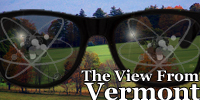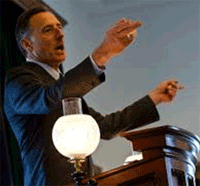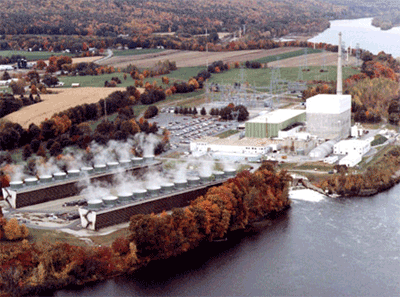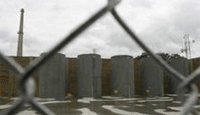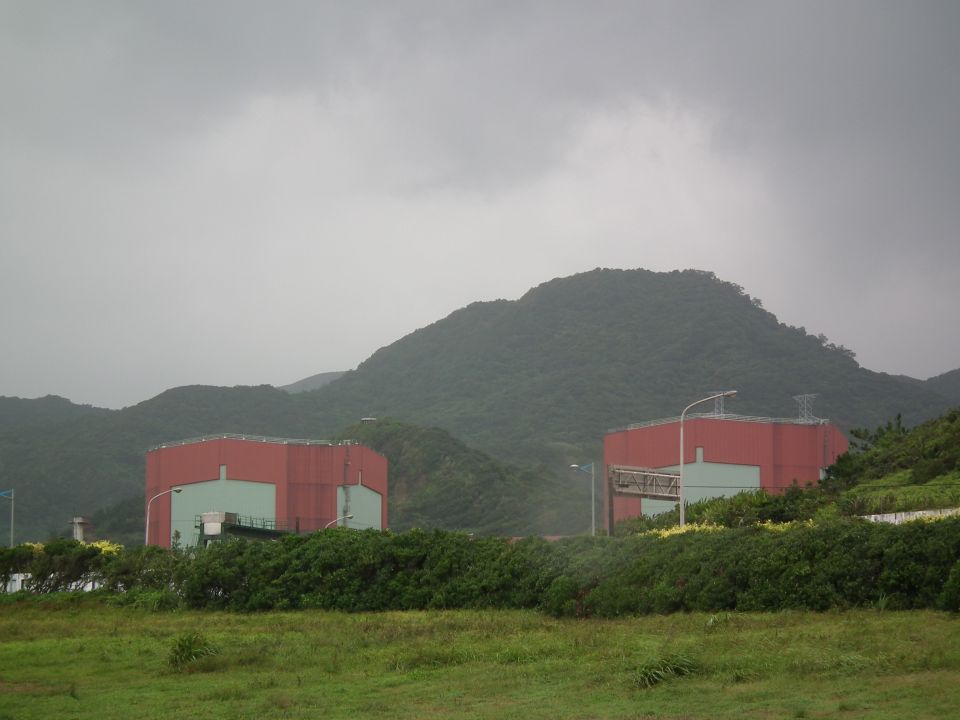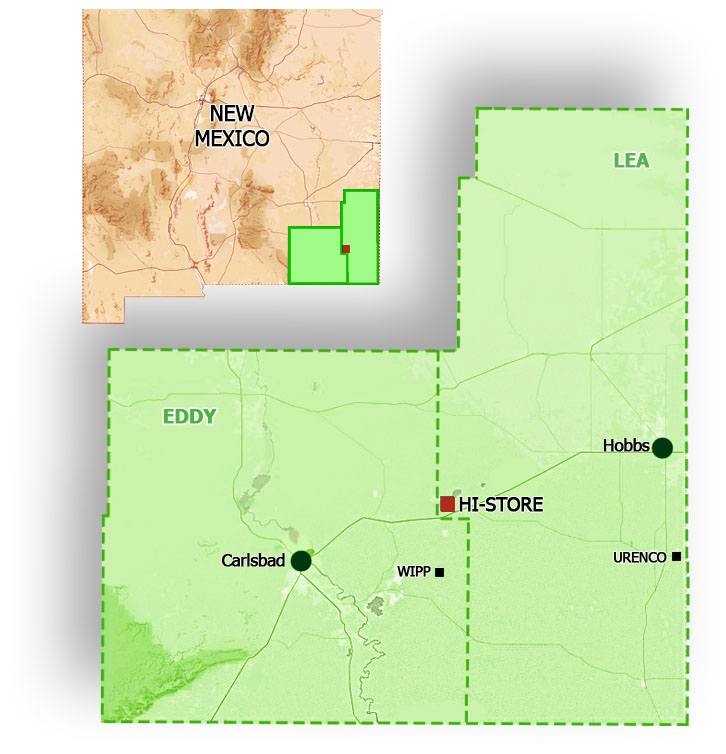Priorities for 2012 in Vermont Politics
Vermont's geography of steep mountains and narrow valleys makes heavy rains destructive. Many roads and bridges were washed out during the hurricane. Homes, trailers, and propane tanks were carried away. Rivers changed courses, which changed some property lines. A few town halls and their records were flooded. Federal disaster assistance and private help were provided. Heroic efforts by citizens restored the roads and bridges by winter, and the economy picked up. Governor Peter Shumlin rightfully acknowledged these efforts in his Vermont State of the State speech.
The Legislature and Governor
The governor is working with a legislature dominated by his Democratic party, 22 to 8 in the Senate and 102 to 48 in the House. In the 2010 election, he credited 14 percent of his vote to the anti-nuclear power/Vermont Yankee vote, in his slim victory margin. An Associated Press local writer wrote a January 17 article "Vermont Settles in To One-Party Government."
With all the major issues the legislature must face, and with the Vermont Yankee nuclear power plant's fate in the hands of the federal courts, it might be thought that there would be no time to devote to the "Great Anti-Nuclear Crusade," local version. Not a chance of that happening in Vermont, however.
Another Lawsuit
The two privately-owned electric utilities in Vermont that are purchasing power from Vermont Yankee are now suing the plant for their extra costs. They claim reimbursement for the replacement power they had to purchase when the plant had to reduce power in 2007 and 2008. One cell in one of two eleven-cell forced draft towers collapsed, and the next year there was a problem with areas that had been repaired.
Apparently, these two companies had no insurance for power lost in these events, nor did their contracts with Vermont Yankee call for reimbursement. The companies say that the contracts did call for "good utility practice." There was no report of negotiations, or if there is a statute of limitations.
In a change in course, the local AP writer's story on this lawsuit described how the towers work, and how they use river water. The story finally reports that the infamous picture of the collapsed cell, with water pouring on the debris from the collapse, was leaked to the New England Coalition, an opponent of the plant. The coalition passed the picture to the media, and it is on the internet and used nationally in articles about Vermont Yankee. The plant's opponents trot it out at every opportunity, and use it in their literature, trumpeting the dangers of nuclear power.
Keeping the Money Flowing
In order to store used fuel in dry casks on its site, Vermont Yankee had to apply to the state's Public Service Board for a Certificate of Public Good. In the Memorandum of Understanding signed to obtain the certificate, the plant agreed to contribute to the state's Clean Energy Development Fund. Per the memorandum, the contribution will stop on the date when the plant's original 40-year license, now extended for 20 years, ends.
A new revenue stream is needed. Bills have been introduced in both the House and the Senate to tax the used fuel from nuclear power plants stored in the state. Vermont Yankee is the only nuclear plant in the state, and the representative introducing the bill, who chairs the House Natural Resources and Energy Committee, is an ardent anti-nuke. It is not likely that he is contemplating any more nuclear plants in the state. If the tax targeted just one entity, however, it is believed it would be found illegally discriminatory.
The House version calls for an annual $2 million per dry cask. It also calls for an equivalent tax on the fuel in the storage pool, determined by a formula. This formula appears to have been originated by someone with limited knowledge of the plant and fuel details, and it is incorrect. It says to "divide $2 million by the volume of a dry cask and multiply by 50 percent." The text implies this figure would be used to apportion the volume of used fuel in the pool (i.e. multiply by), but this is not in the formula. Engineers would use a logical per fuel assembly basis to easily achieve a correct answer.
Re-greening the Green Mountain State
The House bill taxing used fuel also initiates a "Postclosure Funding Tax" of $25 million per year. This tax starts when the bill becomes law. The purpose of the fund is to restore nuclear plant sites, which are "well-suited for electric generation and transmission" to "greenfield" condition, "without a long delay." Greenfield is defined as "removal of all above- and below-grade structures, equipment, and foundations."
The bill assumes decommissioning as required by the Nuclear Regulatory Commission will take place first. It prohibits use of the funds for decommissioning unless all other funds have been exhausted. Just as with decommissioning, funds reimburse activities completed. The fund draws interest, and excess funds are returned to the owners. The tax stops when the Public Service Board determines that greenfield conditions have been met.
It will be interesting to see how the lawsuit and the tax bill fare.
Meanwhile the Vermont Yankee plant has been operating very well.
___________________________________
Howard Shaffer has been an ANS member for 35 years. He has contributed to ASME and ANS Standards committees, ANS committees, national meeting staffs, and his local section, and was the 2001 ANS Congressional Fellow. He is a current member of the ANS Public Information Committee and consults in nuclear public outreach.
He is coordinator for the Vermont Pilot Project. Shaffer holds a BSEE from Duke University and an MSNE from MIT. He is a regular contributor to the ANS Nuclear Cafe.

-3 2x1.jpg)
